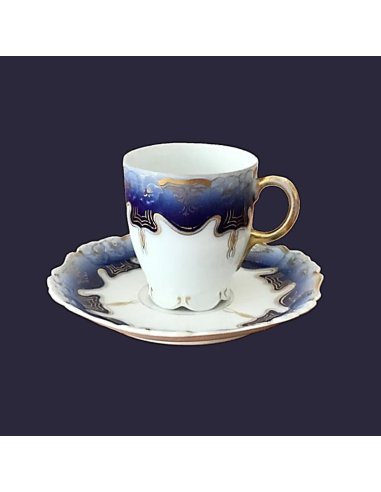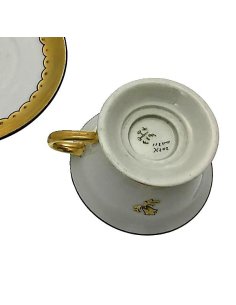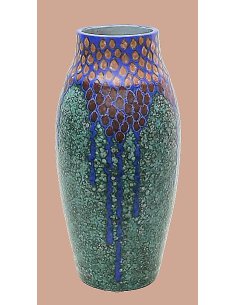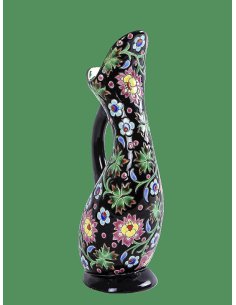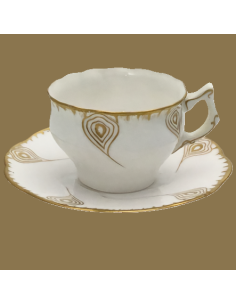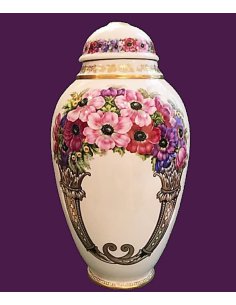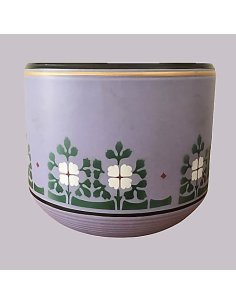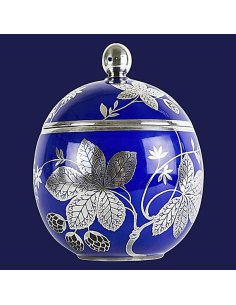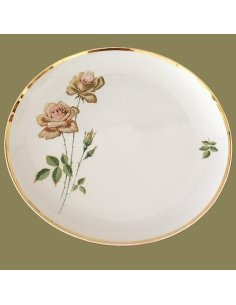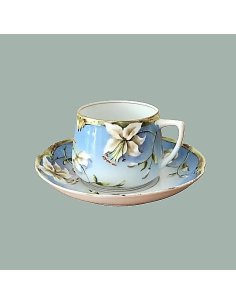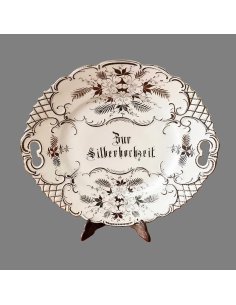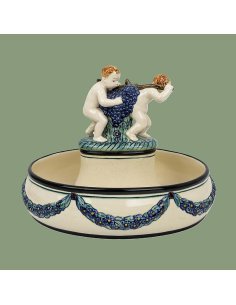Art Nouveau Cup "Pensée" – Rosenthal Kronach, c. 1902
This delicately crafted porcelain cup with the "Pensée" (French for "pansy" or "violet") decor is an outstanding example of the artistic quality and stylistic elegance of early Rosenthal production around the turn of the century.
The cup's shape is typical of Art Nouveau: a finely curved silhouette with a slightly outward-turning rim and an elegant, high-set handle. The cup's walls are particularly thin, almost translucent, which underscores the high quality of the porcelain body and the mastery of Rosenthal's turners and molders.
The floral decoration features a stylized pansy motif in soft colors, hand-painted in soft shades of purple and violet with leaf-green accents. The blossom is not merely an ornament, but a symbol of remembrance and tender connection in the spirit of the fin de siècle era. A fine gold rim borders the upper rim of the cup and the handle, lending the piece an additional touch of elegance.
The green base mark with a crown, "Rosenthal Bavaria," and the initials "R - C" (for Rosenthal - Kronach) dates this piece to approximately 1901 to 1905 and clearly indicates production at the manufactory in Kronach (Upper Franconia), one of the first production sites of the emerging porcelain company. It represents Rosenthal's early expansion phase, when Philipp Rosenthal founded various factories to produce both everyday and art porcelain of the highest quality.
The "Pensée" cup is not only a beautifully designed object, but also an authentic testament to the decorative culture of the 1900s – ideal for Art Nouveau enthusiasts and collectors of historic Rosenthal pieces.
Bauer, Rosenthal & Co. and the Beginnings of the Rosenthal Manufactory
The Kronach factory – founded in 1897 as Bauer, Rosenthal & Co. – played a central role in the early development of the Rosenthal family.
With its focus on fine decorative porcelain, it played an important role in the Art Nouveau period and contributed significantly to the establishment of Rosenthal as a leading manufacturer of artistic porcelain.
However, from the late 1920s onwards, the factory was gradually abandoned as Rosenthal concentrated production at more modern and economically efficient locations such as Selb and Marktredwitz. There is no exact date for an official "closure," but production was presumably shifted to the other factories during the 1930s.
Philipp Rosenthal recognized early on the potential of combining artistic quality with industrial production. With factories in Selb, Marktredwitz, and Kronach, he laid the foundation for an international success story.

